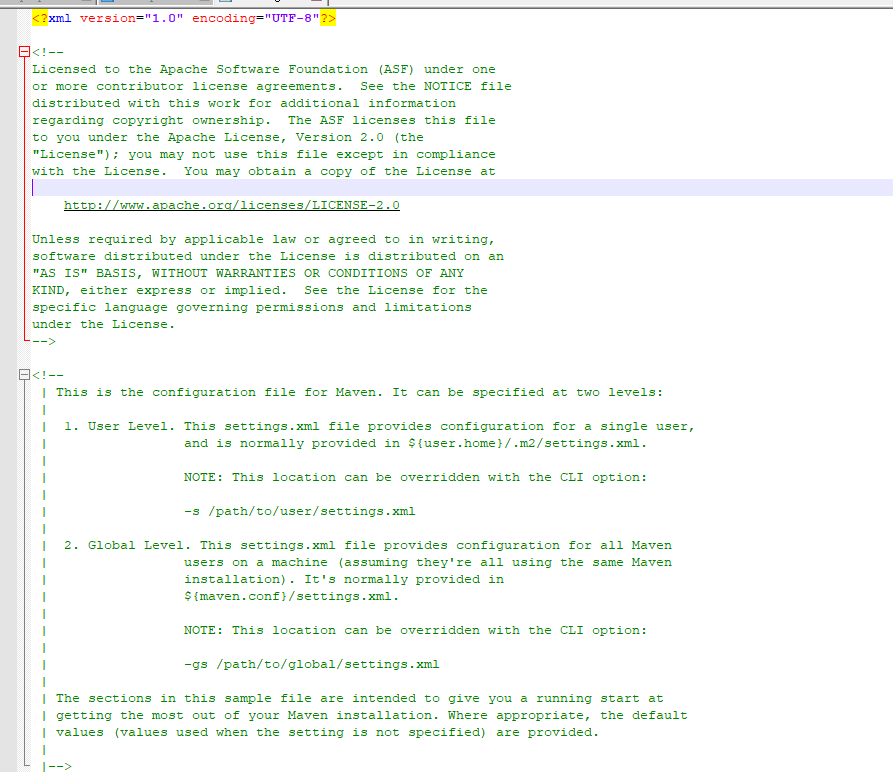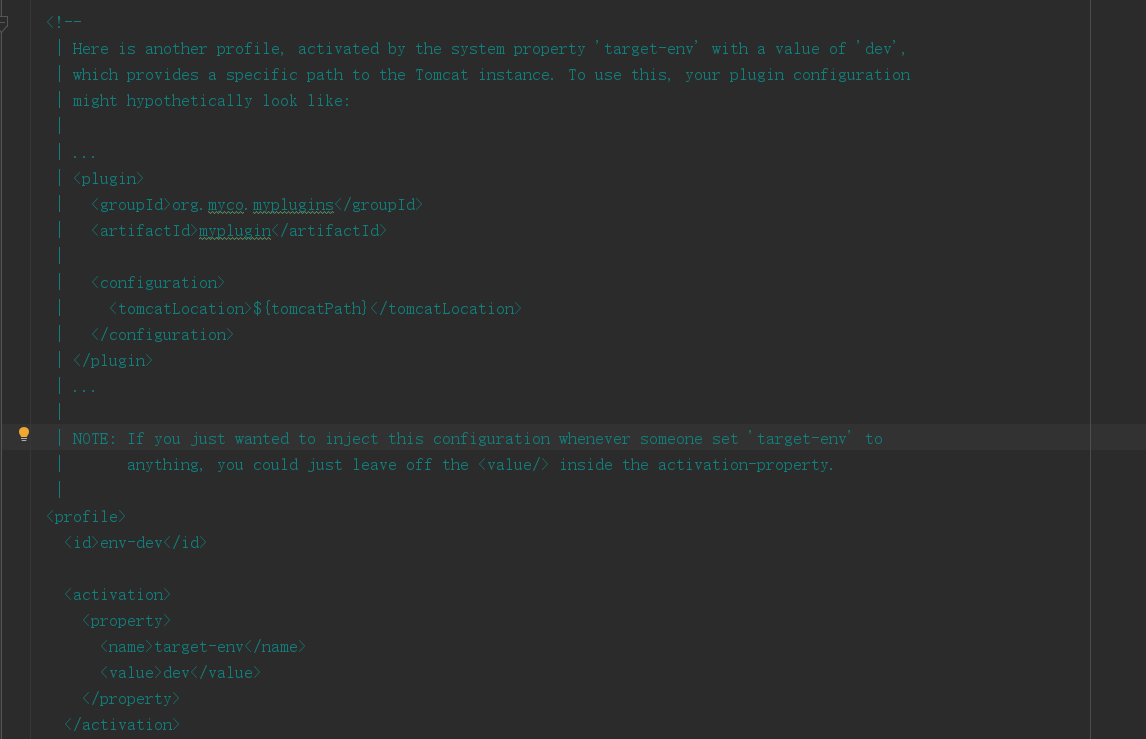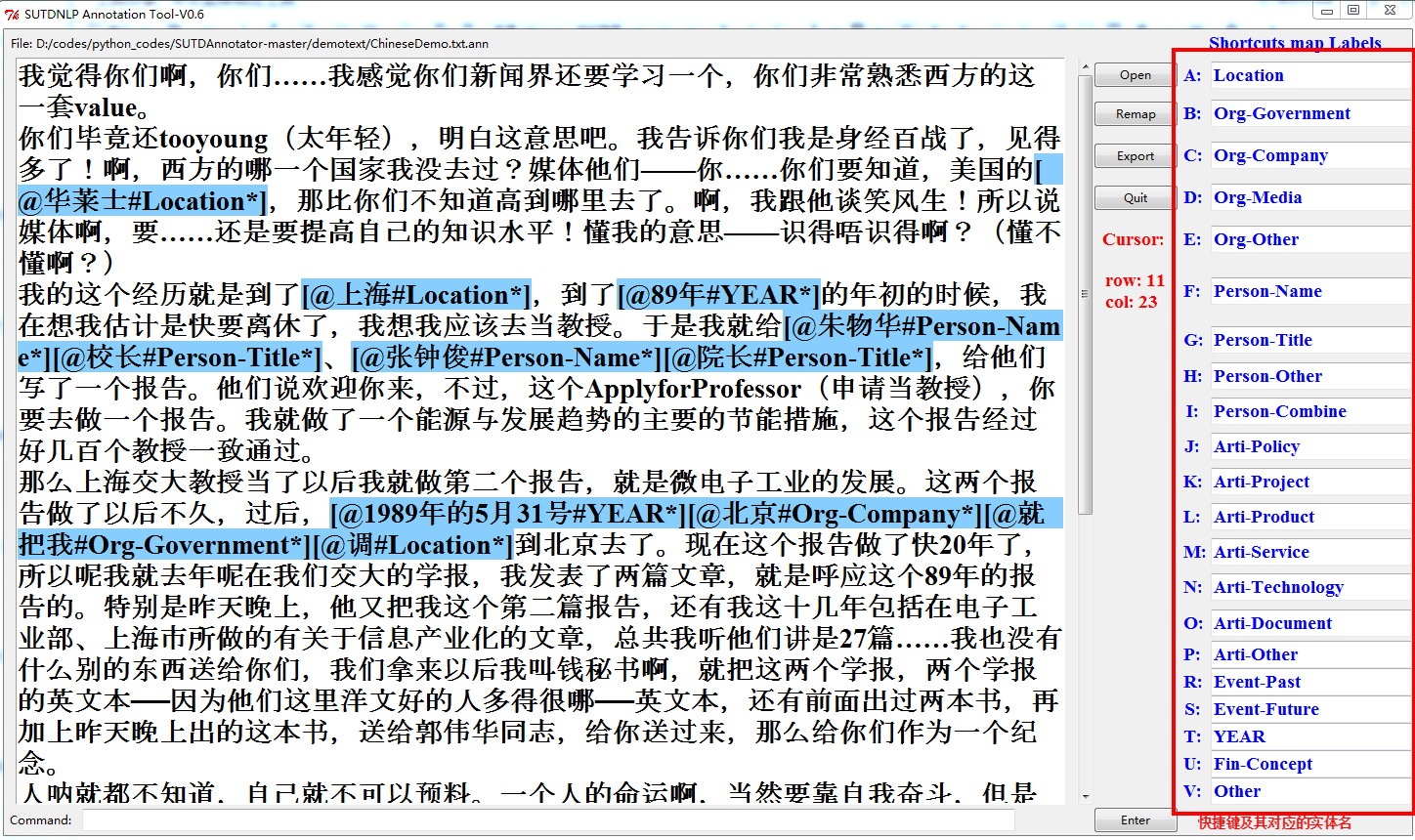Maven -- setting文件总结
文章目录
- 前言
- 先转成中文
- 指定本机maven依赖下载地址
- 配置私有仓库账号密码
- 配置阿里云镜像镜像
- 配置私有仓库
前言
真的是醉了,本来想看下maven配置,既然··· 都是要收费的,所以研究一下记录下来

先转成中文
根据一项或多项贡献者许可协议被许可给Apache Software Foundation(ASF)。有关版权拥有权的其他信息,请参见随本作品分发的NOTICE文件。 ASF根据Apache许可证2.0版(“许可证”)向您授予此文件的许可;除非遵守许可,否则您不得使用此文件。您可以在http://www.apache.org/licenses/LICENSE-2.0上获得许可的副本。除非适用法律要求或以书面形式同意,否则根据“许可”分发的软件均按“原样”分发,没有任何明示或暗示的保证或条件。有关许可下特定的语言管理权限和限制,请参阅许可
http://www.apache.org/licenses/LICENSE-2.0
这是Maven的配置文件。可以在两个级别上指定它:
1.用户级别。此settings.xml文件为单个用户提供配置。并且通常在$ {user.home} /。m2 / settings.xml中提供。
注意:此位置可以使用CLI选项覆盖: -s /path/to/user/settings.xml
2.全球水平。这个settings.xml文件提供了所有Maven的配置。一台计算机上的用户(假设他们都使用相同的Maven 安装)。通常在其中提供$ {maven.conf} /settings.xml。
注意:此位置可以使用CLI选项覆盖:-gs /path/to/global/settings.xml
此样本文件中的各节旨在为您提供一个|的开始。充分利用您的Maven安装。在适当的情况下,默认提供值(未指定设置时使用的值)。

localRepository 本地存储库maven的路径将用于存储工件。
默认值:$ {user.home} /。m2 / repository / path / to / local / repo
默认就算用户下面有个.m2 下面有个repository 放置maven依赖
所以你可以覆盖重写
指定本机maven依赖下载地址
<localRepository>D:\depository</localRepository>
指定位置

InteractiveMode
这将确定maven是否在需要输入时提示您。如果设置为false,则Maven将使用合理的默认值,也许基于其他设置。有问题的参数。
默认值:true true </ interactiveMode>
offline
离线确定执行构建时,maven是否应尝试连接到网络。 这将对工件下载,工件部署等产生影响。默认值:false false </ offline>
pluginGroups
这是通过前缀即解析插件时将搜索的其他组标识符的列表。调用“ mvn prefix:goal”之类的命令行时。 Maven将自动添加组标识符如果“ org.apache.maven.plugins”和“ org.codehaus.mojo”尚未包含在列表中。
servers
指定在连接到特定服务器时要使用的身份验证信息标识。系统内的唯一名称(以下称为“ id”属性)。 注意:您应该指定用户名/密码或privateKey /密码,因为这些配对是|。一起使用。
<server><id>deploymentRepo</id><username>repouser</username><password>repopwd</password></server>
配置私有仓库账号密码
<server><id>snapshots</id><username>xxxx</username><password>xxxx</password></server><server><id>releases</id><username>xxxx</username><password>xxxx</password></server>
mirrors

指定要使用的存储库镜像站点,而不是给定的存储库。该存储库|此镜像服务的ID与该镜像的mirrorOf元素匹配。使用ID 用于继承和直接查找目的,并且在整个镜像集中必须是唯一的。
配置阿里云镜像镜像
默认是国外的镜像,下载比较慢
<mirror><id>nexus-aliyun</id><mirrorOf>central</mirrorOf><name>Nexus aliyun</name><url>http://maven.aliyun.com/nexus/content/groups/public</url></mirror>
配置私有仓库

指定要使用一个或多个激活的构建过程的一组介绍。上述机制。出于继承目的,并通过 激活配置文件。或命令行,配置文件必须具有唯一的ID。
鼓励使用的概要文件识别最佳做法是使用一致的命名约定。用于配置文件,例如“ env-dev”,“ env-test”,“ env-production”,“ user-jdcasey”,“ user-brett”等。这将使您更直观地了解这组引入的配置文件正在尝试什么。要完成的任务,特别是当您仅具有用于调试的配置文件ID的列表时。 此概要文件示例使用JDK版本触发激活,并提供了特定于JDK的存储库。
给了一个例子 是 特定的jdk的存储库
<profile><id>jdk-1.4</id><activation><jdk>1.4</jdk></activation><repositories><repository><id>jdk14</id><name>Repository for JDK 1.4 builds</name><url>http://www.myhost.com/maven/jdk14</url><layout>default</layout><snapshotPolicy>always</snapshotPolicy></repository></repositories></profile>

这是另一个配置文件,由系统属性“ target-env”激活,值为“ dev”。它提供了到Tomcat实例的特定路径。要使用此功能,您的插件配置可能看起来像:
<plugin><groupId>org.myco.myplugins</groupId><artifactId>myplugin</artifactId><configuration><tomcatLocation>${tomcatPath}</tomcatLocation></configuration></plugin><profile><id>env-dev</id><activation><property><name>target-env</name><value>dev</value></property></activation><properties><tomcatPath>/path/to/tomcat/instance</tomcatPath></properties></profile>
注意:如果您只是想在有人将“ target-env”设置为时 那么注入此配置。任何事情,您都可以忽略激活属性中的。
<profile><id>nexus</id><repositories><repository><id>central 中央仓库</id><url>nexus 仓库地址</url><releases><enabled>true</enabled></releases><snapshots><enabled>false</enabled></snapshots></repository><repository><id>snapshots 私有仓库地址</id><url>私有仓库</url><releases><enabled>false</enabled></releases><snapshots><enabled>true</enabled></snapshots></repository></repositories><pluginRepositories><pluginRepository><id>central</id><url>中央仓库插件</url><releases><enabled>true</enabled></releases><snapshots><enabled>false</enabled></snapshots></pluginRepository><pluginRepository><id>snapshots</id><url>私有仓库插件</url><releases><enabled>false</enabled></releases><snapshots><enabled>true</enabled></snapshots></pluginRepository></pluginRepositories></profile></profiles>



































还没有评论,来说两句吧...